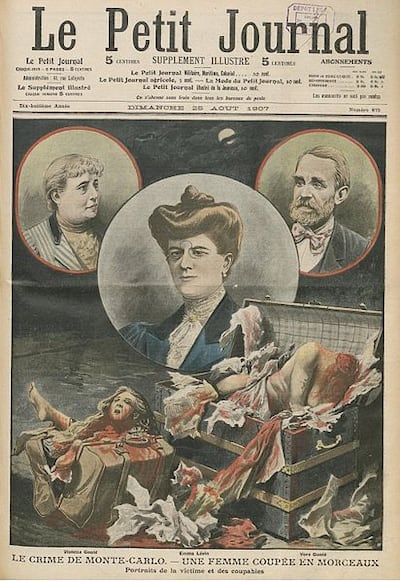When we think of the Irish in Monaco we immediately envision Grace Kelly, the Oscar-winning Irish-American actor who became a Monégasque princess. Yet before she joined the illustrious House of Grimaldi, she starred on screen in Alfred Hitchcock's film adaption of Dial M for Murder.
In this 1950s cinema classic Kelly played Margot Wendice, the wealthy wife of a well-known ex-tennis star who plots her murder in order to finance his comfortable lifestyle. How paradoxical then it must have seemed that less than 50 years before Kelly's arrival in the Riviera another Irish émigré, Vere St Leger Goold, himself a former tennis champion, would be found guilty of one of the most grisly homicides in the history of the principality.
His story is one of unfulfilled promise. He was the child of an aristocratic family, the grandson of a Baronet and a great-grandson of the Earl of Kenmare. As an adolescent in Waterford he spent his free time sailing, hunting, riding horses and playing tennis. He was fiercely competitive and didn’t shy away from putting his money where his mouth is. These traits would remain with him throughout his life.
Goold was also known to be unceasingly charming and frequently used his charisma to advance himself socially. As his father’s fifth son he didn’t stand to inherit very much and tennis appeared to him as a gateway to a rarefied existence that otherwise would have been beyond his means.
Luckily he didn’t lack talent. His energetic playing style was described as “showy and attractive” and in 1879 he won the inaugural Irish Open and even made it to the Wimbledon final, where he lost out to the Reverend John Hartley, the only clergyman ever to win the championship.
Hartley described Goold as “a wild and cheery Irishman” and reports from the time suggest that he had been suffering from “a roaring hangover” during the match, something unimaginable today.

Sadly his fondness for drink and drugs would be his undoing and his life rapidly spiralled out of control. What had been a promising tennis career came to an abrupt end in 1883 when he abandoned the sport altogether after suffering a series of defeats.
Goold lived as a man of leisure on an allowance provided by his family but continued to drink heavily.
In 1891, he married a dressmaker named Marie Giraudin and they lived a lavish lifestyle in London before financial difficulties led them to emigrate to Montreal to escape their creditors. There the couple continued to spend freely and racking up significant gambling debts, were forced to flee once more, settling in Liverpool in 1904.
Growing desperate, “Sir Vere and Lady Goold” as they now referred to themselves, decided they needed a big windfall to set their fortunes right again. They left for Monaco where they were determined to “break the bank” at that renowned cathedral of vice, the Casino de Monte-Carlo.
After some initial success at the roulette table they began to lose heavily and once more sought to endear themselves to wealthy patrons who could subsidise their lifestyle. They settled on Emma Levin, a rich Danish widow who soon made “Lady” Goold a companion of hers and agreed to loan Vere 1,000 francs.
Marie was not the only one supported by Levin and she soon sought to drive a wedge between her benefactor and a Madame Castellazi. They openly quarrelled and the dispute became widely published.
Levin’s reputation was tarnished by association and she decided to quit Monaco to escape the unwanted attention.
Levin made it clear she wished to have the money she had loaned to the Goolds returned before her departure. Facing ruin, the couple instead decided to murder the dowager during her visit to their apartment and make off with her jewellery, valued at 125,000 francs.
Afterwards, they fled to Marseille where they hoped to board a ship to the UK. However an eagle-eyed porter noticed a dark red liquid was oozing from their luggage. The couple claimed it contained freshly-slaughtered poultry but the suspicious official summoned the police. The case was opened and the dismembered torso of Levin was found inside.
The discovery shocked the world.
The incident became known as “the Monte Carlo Trunk Murder” and gained global media attention. Both were found guilty. Marie Goold narrowly avoided the death penalty. Vere was sent to Devil’s Island in French Guiana, a prison described as “hell on earth”.
Within a year he had committed suicide. Marie died in Montpellier prison in 1914. To this day Goold remains the only Wimbledon finalist to have been convicted of murder.
This Extraordinary Emigrants article was written by Nathan Mannion, senior curator of EPIC The Irish Emigration Museum in Dublin’s Docklands, an interactive museum that tells the story of how the Irish shaped and influenced the world











